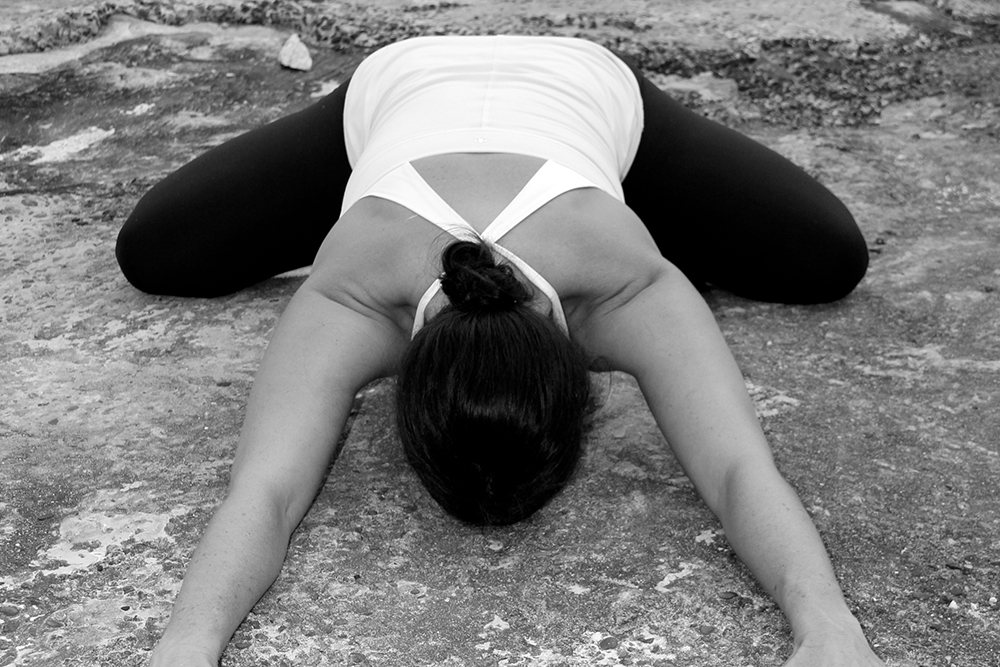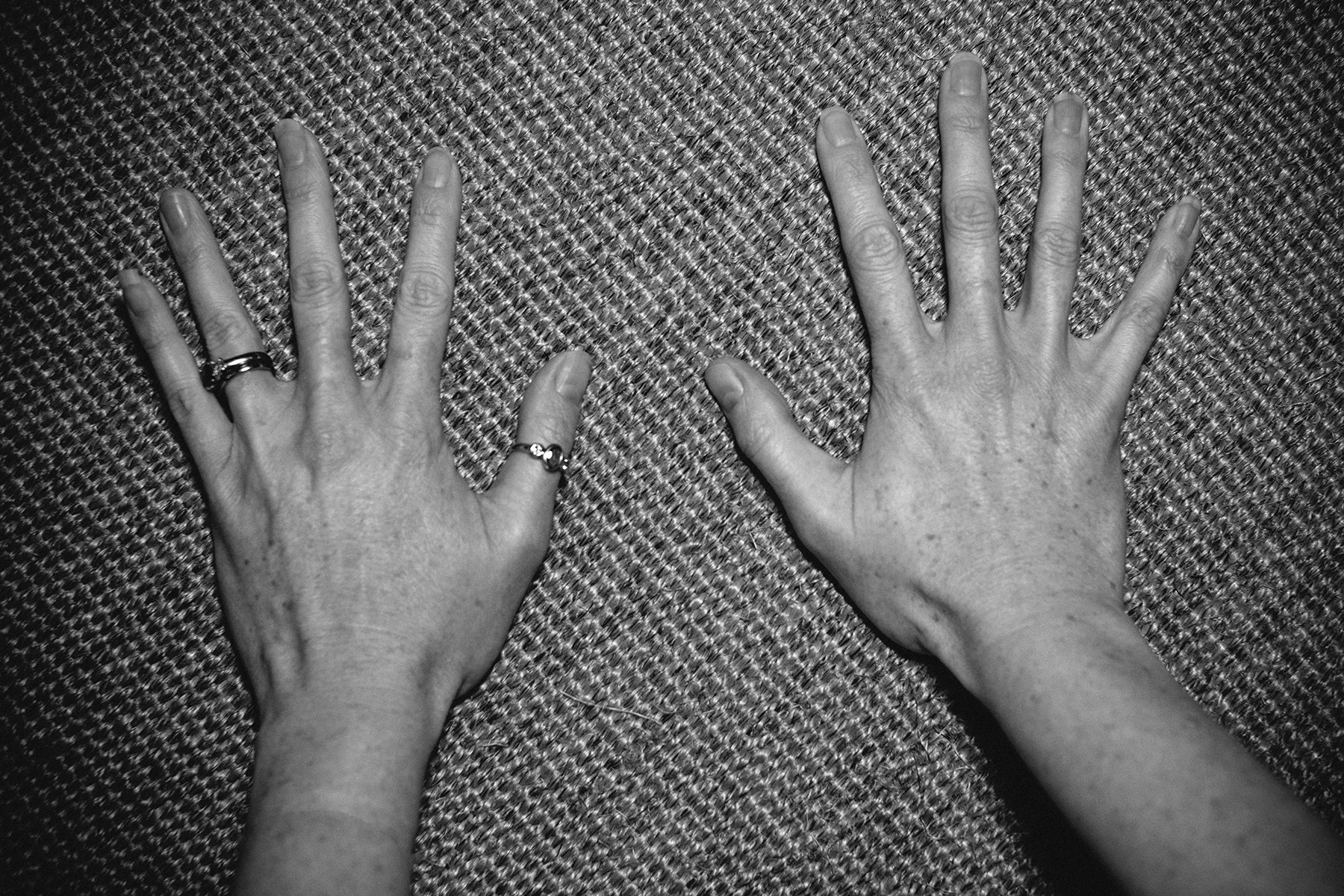Why does yin yoga make you cry?
Imagery: Melanie McLaughlin // @theyinspace
Unsplash
Image: Volkan Olmez // Unsplash
Is Yin yoga the ultimate antidote to modern adulting? I think it might be. Sure it may not smash the calories like your standard vinyasa class but the slow, juicy burn and emotional reset of a strong Yin session feels like a facial for your soul, and the older I get the more I’m craving facials rather than full-on fitness carnage.
I first fell in love with Yin yoga when I suddenly burst into mysterious, cathartic tears mid-class. I wasn’t consciously upset about anything, but boy, did I need a cry! Turns out Yin can bring on the waterworks faster than watching The Notebook on a plane after a G&T.
If you haven’t tried it before, Yin is a yoga style that evolved from the Taoist yoga lineage. Although there are 26 poses you may only do a handful of them in a class because each pose is held for anywhere between two and 10 minutes. Each pose focuses on flushing out different meridians, the same energy channels used in traditional Chinese medicine and acupuncture.
So why is it that Yin can bring a reasonably stoic Capricorn-rising who seldom cries like me to my knees? I chatted to Mel McLaughlin, of The Yin Space to find out.
How Mel found yin (and yin found mel)
Long before she became a Yin yoga expert, Mel was a fast-flowing, yang-loving power yoga machine. “I was literally known as the velvet hammer – all soft, but I taught the hardest classes,” laughs Mel. “Transitioning into Yin was a personal thing that really healed me and helped me. I'd been practising power yoga for 12 years, I was in my mid 30s at this point, and things were starting to fall apart a little bit. I was getting SI joint trouble and things were flaring up, and I couldn't do drop backs and all those big things anymore.”
When Mel approached her studio wanting to introduce Yin classes to the timetable, they were understandably surprised. “It wasn't hip at all. Yin personally came for me at the right time - as these things always do - and I had to convince the studio,” Mel says. “ I said that this was going to be the thing that people turned to when they'd done a decade of flow and power. Now, I love flow and power and vinyasa, but I knew that something had to give at some point. If we were growing up together in Sydney in the yoga world, we needed something after that.”
Mel McLaughlin is a teacher, trainer and Yin expert who founded Sydney studio The Yin Space
why yin yoga is different
So how does it work exactly Well, as opposed the more widely practised westernised yoga styles, Yin is all about disengaging. “Your Hatha, your Vinyasa, all of that is a Yang style yoga. Even though it can be slow and meditative it engages the muscles; you're using your muscles to move your skeleton, up dog, down dog and warrior one,” says Mel. “Yin is the exact opposite, there’s a distinct lack of engagement. It works Yin tissue like fascia, bones, ligaments, joints and connective tissue and it's mostly floor based so you actually can let go of your muscles.”
Sounds easy right? Not quite. “Yin is mistaken for a restorative yoga sometimes but it's actually not. It will restore you, but it's not restorative yoga… they're two very different things,” Mel says. “What picks up the slack when you disengage your muscles and what you feel stretching is actually not a stretch at all it's called a ‘tensioning’. So you sit in a pose for five minutes, and you pull the fascia slowly and gently and patiently and then you lie down, and it rebounds. When it rebounds it kind of flushes, so you get a cleaning of the fascia.”
“It can be painful on all three levels of your body; physically, mentally, and emotionally…But that is also the medicine.”
Why Yin unleashes emotions
It’s that releasing action that can bring up all kinds of emotions – including unexpected tears. You’ll find the most triggering poses are those that work on releasing the fascia around your hips. If you think of your body like a car, your hips are the boot or trunk where you literally store all your emotional baggage. “Your hips have six of the twelve meridians running through them. So anything you do around your hips, you've got six major organs, six meridians, and a whole melting pot of stuff to deal with down there,” says Mel. “When you sit there and start to pull at this fascia and squeeze it and rinse it and move it and rebound it, anything that's in there including metabolic waste is going to come out.”
It may sound a little intimidating, but trust me when I say it is quite possibly the most glorious experience you can have on a yoga mat. “Sitting in first two minutes of a pose feels heavenly. And then you hit the zone of pain and it starts to feel uncomfortable because you're literally changing your cells and your tissue,” says Mel. “That's not comfortable. It can feel like you want to get up and run away. You can feel nauseous, you really come up against yourself and what's stored in that soft tissue. It can be painful on all the three levels of your body; physically, mentally, and emotionally. But I do think that is also the medicine. It's the magic and it's the medicine.”
FEELING YIN-CURIOUS?
Here Mel shares her favourite Yin poses to cope with the stress of modern life. Hold each pose for two to three minutes to start with, building up to five minutes as you build resilience.
Dragonfly on the wall -
Best for PMS, menopause
“This is really nice before bed, and it's specifically good for women hormonally because it's the liver that deals with all the blood in your body.”
Butterfly reclined with bolster -
Best for anxiety
“Over a small cushion try it with your hands on your belly, and deep belly breaths. Alternatively, you could try legs up the wall .”
Deer pose -
Best
for anger
"In the gall bladder channel we release frustration and irritations. This is nice way to relieve and support the liver/anger issues without going head-to-head to with it.”
Legs up the wall -
Best for depression
“You’re dealing with the liver, which is either rage or depression… two ends of the spectrum. It actually uplifts your energy so it gives you a little heart lift and then an energy boost.”
Twisted roots -
Best for exhaustion
”Both the balancing effects of being in your spine (CNS) and also the enlivening aspects of arm/chest 'heart fire' can be uplifting and expansive.”
Caterpillar forward fold -
Best for jetlag
”It’s all about calling spirit home, letting spirit catch up, being in your body, kidneys and heart.””
Butterfly forward bend -
Best for fertility
“Fertility is linked to the kidney meridian so this pose is great for fertility issues in both men and women.”
Child’s pose -
Best for insomnia
”Releases any overthinking. We are also stretching into our heart channel which is allows us to ‘settle an unquiet spirit' .”












